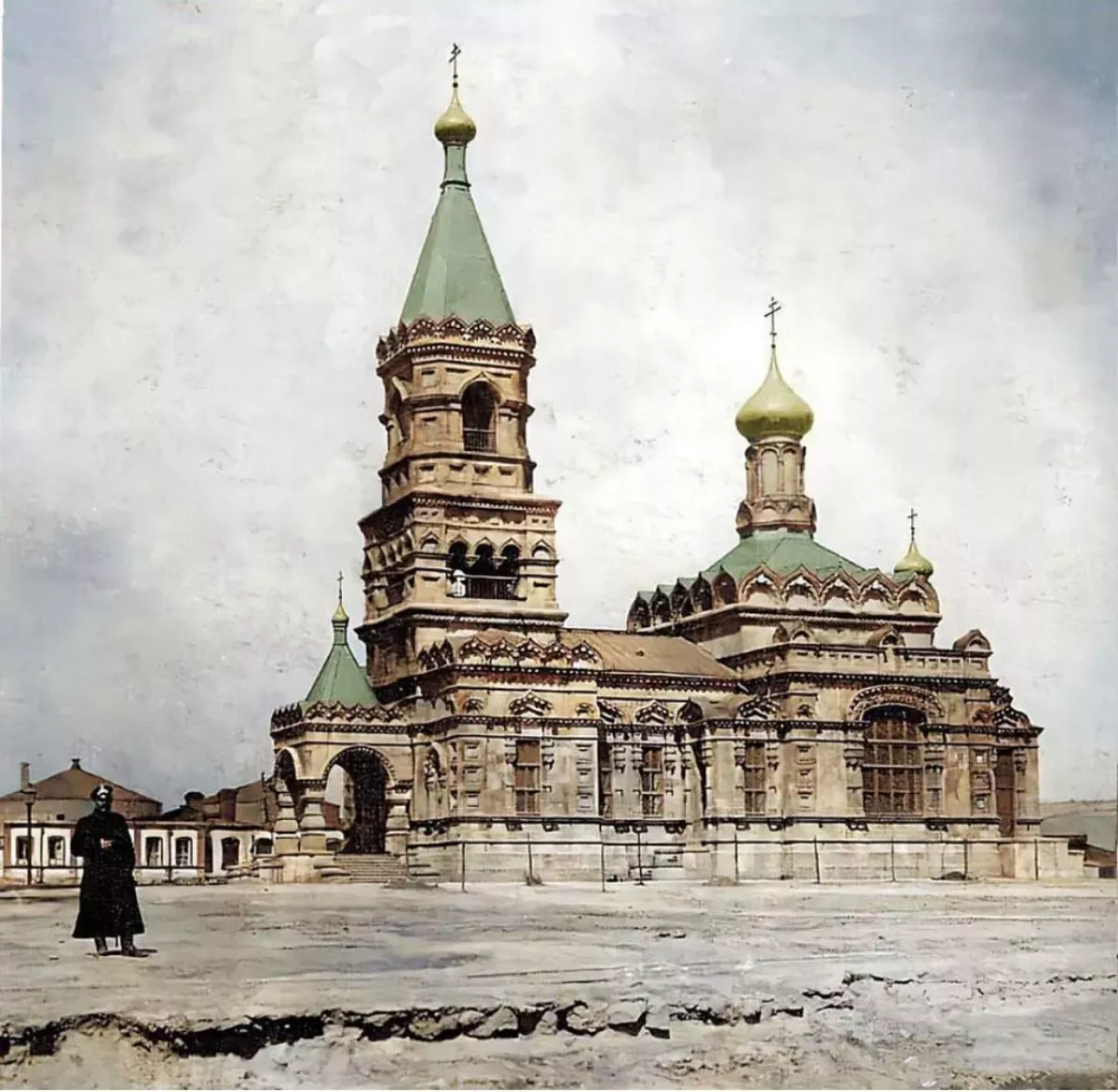Architectural chronicle of Baku: Church of the Holy Prophet Elijah A Journey through history on Caliber.Az
Baku has always been a city where people of different nationalities and faiths coexisted peacefully, a fact reflected in its architectural landscape. Majestic temples, mosques, and synagogues have been built here since ancient times, each serving not only as a place of worship but also as a true architectural masterpiece. This multi-confessional character and respect for diverse religious traditions created a unique atmosphere in the city, where the past harmoniously blends with the present.
The year 1929 marked the beginning of the so-called “Great Break,” a turning point in the history of anti-religious policy. The adoption of a series of legal acts significantly restricted the rights of religious organisations and granted local authorities broad powers to close places of worship. This initiated a large-scale campaign to eliminate religious buildings: churches, synagogues, and mosques were closed and destroyed en masse. Many magnificent temples were wiped off the face of the earth as part of the state atheism policy.
Baku irreversibly lost many architectural gems that once adorned its cityscape. Among them were the magnificent Bibi-Heybat Mosque, the grand Alexander Nevsky Cathedral, the elegant Church of Saint Alexius, Metropolitan of Moscow—known as the Bailov Church—and many others. These sacred sites were not merely buildings, but symbols of the city’s spiritual diversity and architectural brilliance. Their loss marked a painful chapter in Baku’s history, depriving the city of part of its cultural memory and the unique charm of a bygone era.

One of Baku’s destroyed architectural gems was the Church of the Holy Prophet Elijah, also known as the Chernogorodskaya Church, which once served as an important spiritual centre for the faithful.
The history of this church began in 1901, when the rector of the cathedral and dean of churches in Baku, A. Yunitsky, appealed to the Exarch of Georgia, His Eminence Flavian, requesting a plot of land for the construction of the Chernogorodskaya Church. The Exarch supported the initiative, informed Governor D. A. Odintsov, and established a construction committee to implement the project.
On November 6, 1901, the Baku City Duma reviewed the request, noting that the church would be built for the residents of Chernogorodok with financial support from the Nobel Partnership, which contributed 20,000 rubles. The remaining funds were provided as donations by local industrialists. Contributions came not only in money but also in building materials, various pieces of equipment, and items needed for conducting religious services.
The site chosen for the planned church was a square at the end of 5th Zavodskaya Street (now Khodjaly Avenue), surrounded on other sides by residential buildings of the Nobel Brothers Partnership, the kerosene plant of the Russian Oil Industrial Society (RUNO), and other enterprises.
For the cornerstone-laying ceremony of the Chernogorodskaya Church, built in honour of the Holy Prophet Elijah, His Eminence Alexius, Exarch of Georgia and member of the Most Holy Governing Synod, arrived from Tiflis. Construction of the church began in 1902.
On November 19, 1906, the bells were ceremoniously hoisted. The fully completed church was ready by December, and its solemn consecration was scheduled for December 10, 1906. For this occasion, Archbishop Nikon, Exarch of Georgia, arrived from Tiflis by train on December 9. In 1907, the Most Holy Synod established an independent parish at the Church of the Holy Prophet Elijah in Chernogorodok. The parish encompassed the entire 5th police district (Chernogorodok) and Villa Petrolea of the 6th police district.
The church was not only a beautiful and welcoming place but also an important spiritual centre, where prayers were offered and a special sense of serenity prevailed. Its architectural appearance gave the city a distinctive character, harmoniously blending with the surrounding buildings and creating a dialogue between different styles and eras. Its presence once again emphasised the historical tolerance and multi-confessional nature of Azerbaijan, where places of worship of various religions coexist peacefully, reflecting the country’s rich spiritual culture.

Alas, in 1929, the church was closed and soon demolished—a tragic fate that befell many sacred sites of the time during the “struggle against religion.” On its site, in 1932, the Palace of Culture of the Shaumyan District (Shaumyan Palace of Culture) was built, becoming a symbol of a new era that displaced the city’s former spiritual heritage.

Today, the former Palace of Culture houses the restaurant “Bibi,” and only old photographs serve as a reminder that an elegant church once stood here—a true architectural masterpiece that lent Baku its special charm. With its disappearance, the city lost a page of its rich architectural history, in which every building preserves a fragment of the soul and memory of past generations.
By Vahid Shukurov, exclusively for Caliber.Az
Based on materials from:
-
A. I. Yunitsky, History of Churches and Parishes of Baku Province
-
S. Koltunov, E. Pashazada, Mosques and Churches of Old Baku, 1997








